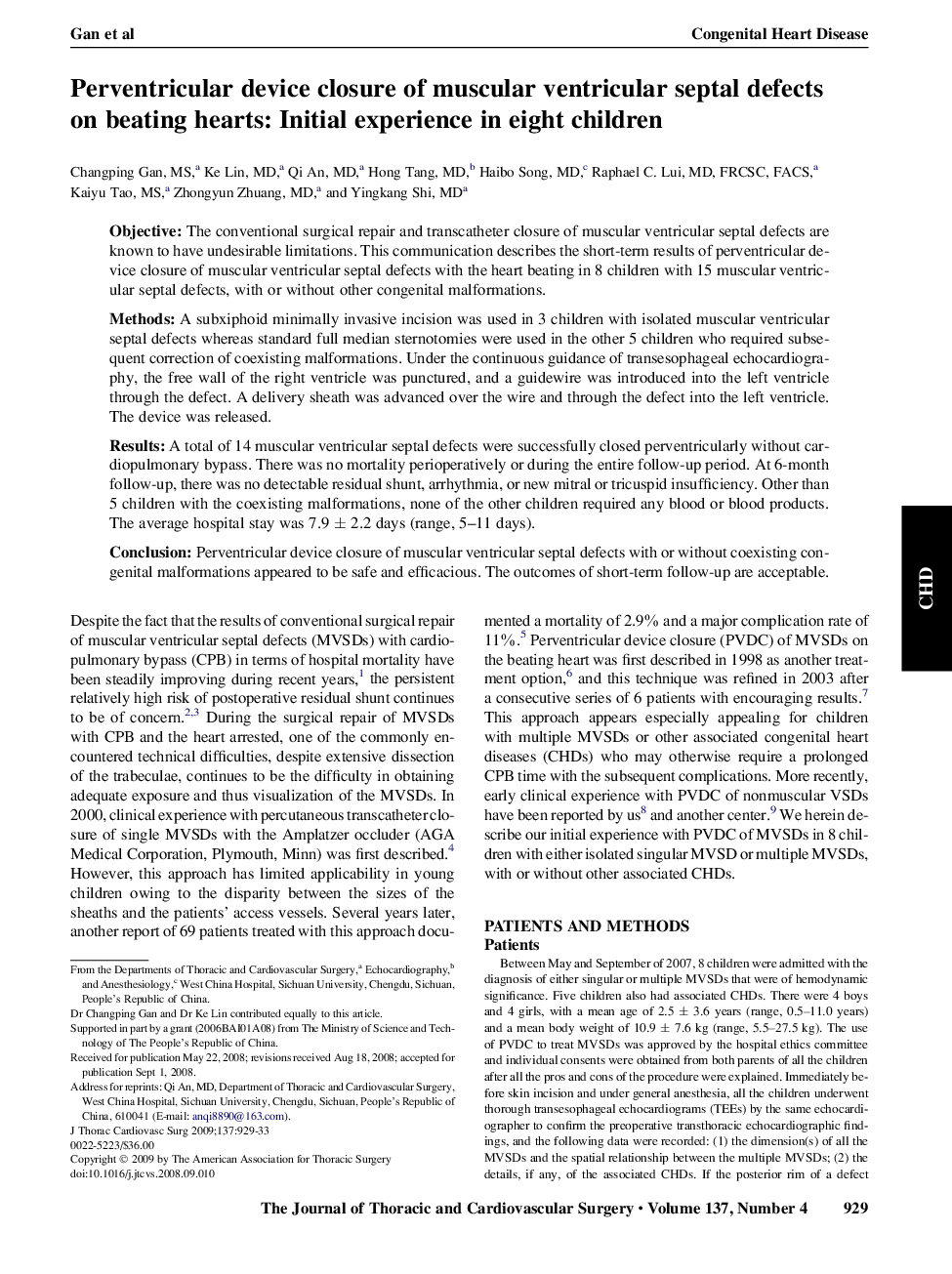| Article ID | Journal | Published Year | Pages | File Type |
|---|---|---|---|---|
| 2982385 | The Journal of Thoracic and Cardiovascular Surgery | 2009 | 5 Pages |
ObjectiveThe conventional surgical repair and transcatheter closure of muscular ventricular septal defects are known to have undesirable limitations. This communication describes the short-term results of perventricular device closure of muscular ventricular septal defects with the heart beating in 8 children with 15 muscular ventricular septal defects, with or without other congenital malformations.MethodsA subxiphoid minimally invasive incision was used in 3 children with isolated muscular ventricular septal defects whereas standard full median sternotomies were used in the other 5 children who required subsequent correction of coexisting malformations. Under the continuous guidance of transesophageal echocardiography, the free wall of the right ventricle was punctured, and a guidewire was introduced into the left ventricle through the defect. A delivery sheath was advanced over the wire and through the defect into the left ventricle. The device was released.ResultsA total of 14 muscular ventricular septal defects were successfully closed perventricularly without cardiopulmonary bypass. There was no mortality perioperatively or during the entire follow-up period. At 6-month follow-up, there was no detectable residual shunt, arrhythmia, or new mitral or tricuspid insufficiency. Other than 5 children with the coexisting malformations, none of the other children required any blood or blood products. The average hospital stay was 7.9 ± 2.2 days (range, 5–11 days).ConclusionPerventricular device closure of muscular ventricular septal defects with or without coexisting congenital malformations appeared to be safe and efficacious. The outcomes of short-term follow-up are acceptable.
